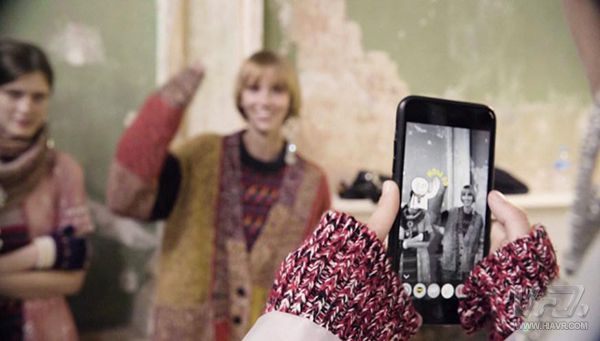
"Sometimes, we think about it. We don't even have digital overlays in the physical world," said Greg Jones, director of Google's VR/AR division. He believes that augmented reality (AR) is more than just a trend—it’s a game-changer, especially when applied to the retail sector.
Tim Cook, Apple’s CEO, shares a similar vision. "Over time, whether on the show floor or at the mall, I believe AR will be as essential as a brand’s website," he said. Both tech giants see AR as a powerful tool that can bridge the gap between the physical and digital worlds.
Though AR has been around for years, it wasn’t until smartphones started integrating these technologies that the public began to take notice. Apple introduced ARKit with iOS 11, while Google launched ARCore for Android. These platforms have made AR more accessible and practical for everyday use.
In fact, consumers have already been using AR without realizing it. From Snapchat filters to Pokémon Go, they’ve interacted with AR in fun and engaging ways. Now, more companies are incorporating AR into their apps, allowing users to add digital elements to real-world images—making the technology feel more natural and intuitive.
According to Digi-Capital, over 900 million AR-enabled smartphones are expected to hit the market by 2018. Jones notes that consumer interest in such technologies will only grow. A Digital Bridge study found that 69% of shoppers want AR features from retailers soon. As Jones puts it, “It’s amazing how quickly people have embraced AR. Just a year ago, they were playing Pokémon Go, and now they’re expecting AR in stores.â€
Moreover, 34% of users say they’d use AR during shopping, and 61% would prefer to buy from stores that offer AR experiences. This shows that AR is not just a novelty—it’s becoming an expectation.
Brands like IKEA, Anthropologie, Wayfair, and Houzz have already adopted AR through Apple’s ARKit, letting users visualize furniture in their homes before purchasing. Google’s Tango and ARCore have also partnered with major brands like Pottery Barn and Gap to enhance the shopping experience.
The beauty industry was one of the first to embrace AR. L’Oréal’s makeup app has over 20 million downloads, allowing users to try products virtually. Others like Sephora and Charlotte Tilbury followed suit, proving that AR can make product trials more interactive and personalized.
Jones sees potential beyond just shopping. He believes AR can provide transparency and build trust with consumers, especially for complex products. It can also deepen emotional connections between brands and customers by offering immersive storytelling experiences.
Burberry used ARKit to create an interactive experience where users could add artist Danny Sangra’s artwork to their photos and share them on social media. Tim Cook even mentioned that AR is perfect for fashion shows, as it allows viewers to experience the full look, not just the front.
Recently, HoloMe and RIXO London collaborated to bring holographic fashion shows to consumers' homes, proving that AR is no longer just for tech enthusiasts—it’s shaping the future of retail and fashion.
As AR continues to evolve, its impact on traditional industries will only grow. What was once a niche technology is now becoming a mainstream tool, redefining how we shop, interact, and experience the world around us.
This article is original content from VR Net. Please credit VR Net and include a backlink.
Diesel Generator
Diesel Generator,Diesel Generator Sets,Portable Diesel Generator,Gensets Diesel Generating Sets
Jinan Guohua Green Power Equipment Co.,Ltd. , https://www.guohuagenerator.com
